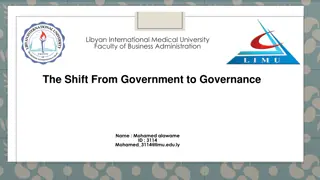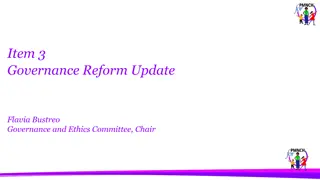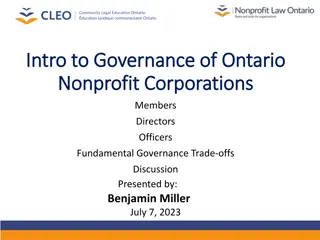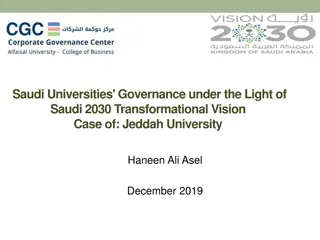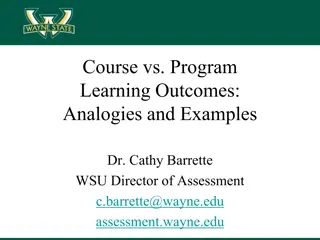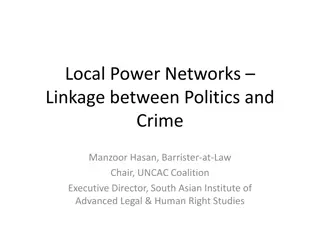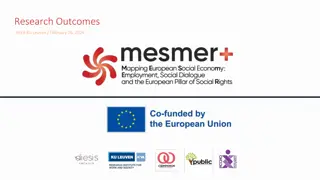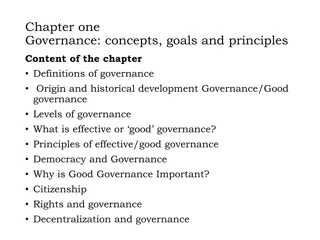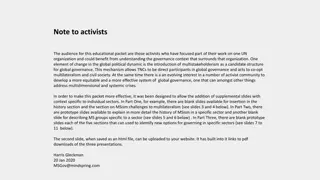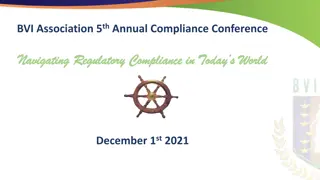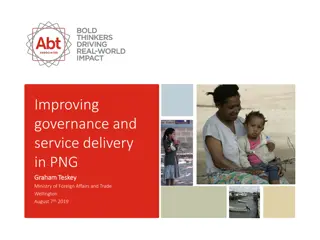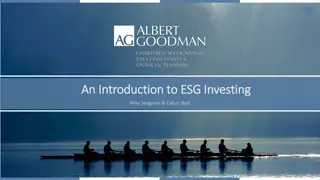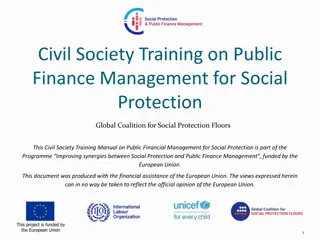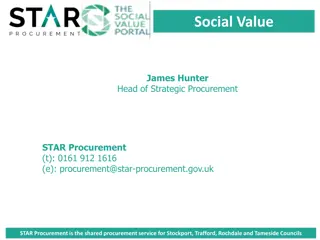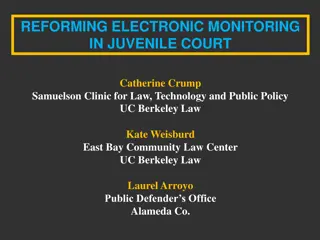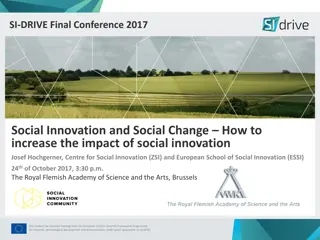Reforming Economic Governance for Social Outcomes in the EU
Investments in social outcomes within the EU have faced challenges such as increased poverty and inequality, prompting a shift towards prioritizing green and digital transitions. The creation of the Recovery and Resilience Facility (RRF) and the need for aligning various financial and policy instruments are highlighted as crucial steps. Recommendations include integrating reforms for social outcomes, adopting an integrated scoreboard for monitoring progress, and recognizing the importance of social investment alongside economic measures.
Uploaded on Sep 14, 2024 | 0 Views
Download Presentation

Please find below an Image/Link to download the presentation.
The content on the website is provided AS IS for your information and personal use only. It may not be sold, licensed, or shared on other websites without obtaining consent from the author. Download presentation by click this link. If you encounter any issues during the download, it is possible that the publisher has removed the file from their server.
E N D
Presentation Transcript
The reform of economic governance and financing instruments to improve social outcomes in the EU 30 January 2024 Dr Lieve Fransen Senior Policy Advisor European Policy Center
Investments and social outcomes? Poverty and inequality increased and major regional disparities. After 2008, reduced public investment has not regained its pre-crisis levels. Cohesion funds became more important, growing from 34% to 51% of public investment between the 2007-2013 and the 2014-2020 period. Under Juncker Commission, move from austerity to investment. Prodi task force on investment in social infrastructure new instrument = invest EU with social window. Results ? Present Commission focus on of green and digital transitions as key drivers of EU growth. Raise the question of fairness and social outcomes of these investments and their potential to create new disparities.
Suspends the fiscal and state aid rules. Creates the recovery and resilience facility (RRF) focusing on the green and digital transformation and to a certain extent on social inequalities in exchange for structural reforms. The RRF may change the debate around establishing a permanent central fiscal capacity at the EU level. The pandemic highlighted investment for the green and digital transitions. However, it fails to apply the same logic to human capital investment, or social investment , in its design. By strengthening people s skills and capacities and supporting them to participate fully in employment and social life, social investment will play a crucial role in rebuilding our economies and societies. This remains to be recognized fully and corrected in the future design - 6 Recommendations When the pandemic hits, this Commission rethinks economic governance and creates new funding mechanism.
The EU has many instruments that contribute to social expenditure, such as the RRF, the European Investment Fund, the Cohesion Funds, and social policy reforms, such as the European Pillar of Social Rights and the European Semester. Recommendation 1 Align the many financial and policy instruments towards reforms to reach social outcomes. Those instruments are too fragmented. Not only is this confusing to Member States and citizens and threatens a more bottom-up approach but it also requires additional administrative capacity from countries to deal with and does not help to implement the reforms at national level. Policies and outcomes should be dealt with in an integrated and holistic way. The reform of the European Semester must prioritize social outcomes alongside fiscal and public administration reforms
Many positive lessons should be taken from the RRF regarding country ownership, financial incentives attached to reforms, the identification of clear targets, country specificity and its multiannual scope. Recommendation 2 Lessons from RRF & Reform the European Semester with an integrated scoreboard A fully integrated scoreboard combining economic, social and environmental outcome indicators should monitor member states progress
This may also support greater social investment, which often has a longer-term return. Recommendation 3 Take a longer term perspective in economic governance A longer- term perspective is currently not prioritized by those member states when they urgently needing to reach adjustment targets.
Reassess the public accounting treatment of public/ social investment, to account for the return on different types of social investment. Recommendation 4 Reassess the accounting procedure for public investments This reassessment should improve the quality of public finances overall, ensuring that member states and the EU prioritize investments that should improve the long-term fiscal, social and environmental trajectory of their economy.
Mechanisms like a golden rule could be applied after the reassessment (4). With the golden rule the government should be allowed to incur debt if it creates new capital, and hence is of value for future generations. Different variants of the golden rule have been put forth but cannot be discussed here. The public investment using public funds for social investment would be excluded from the calculations of deficits. These investments should link to the country specific recommendations issued under the European Semester. The European Commission would supervise this, as it does the RRF. Recommendation 5 Golden rule
Years after the Prodi report on social infrastructure investment and the Porto Declaration called for more social investment, the EU should challenge the tide of underinvestment. Recommendation 6 Longer term social infrastructure, social investment and crowding in private investments Long term public investments should prioritise the social reforms needed to boost growth and competitiveness. However, scale of public investment is limited and needs to be complemented by well targeted private investments. This argument is being widely used in relation to the digital and green transition and made more evident by the pandemic but focus on social outcomes through social investments should be boosted.
Conclusions Boosting public and private investments in social systems and infrastructure is essential to confront the transformations of our social models needed for the 21st century and for growth. Close alignment ,blending and bundling is needed of all policy and financing instruments The the RRF may change the debate around establishing a permanent central fiscal capacity at the EU level. The use of a golden rule approach would help to account for social investments as investments .





